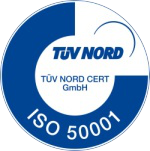Typical problems with extruded plastic strap
Dust formation
During the strapping process with plastic strap, dust is set free as plastic strap is softer than steel with which it gets in touch in the strapping machine. Hence, some strapping material remains in the strapping machine or tool and may cause machine faults. Best preventive maintenance action for this problem is quite simple: continuous cleaing of the machine which is done best with compressed air.
Sabre
Bend of the strap is called 'sabre'. Strap that is intended for use with automatic strapping machines must have low sabre as there are plenty points of contact in the arch of a strapping machine and every contact may cause problems if sabre was too big. For manual use, sabre tolerance is of course a lot higher. The extent of the sabre can be easily measured by putting several meters of strap on the ground along a line - the deviation of the line is the sabre.
Damaged strap ends
Rough or uneven strap ends can cause feeding problems, like dust formation and 'bird's nests'. The latter occur when the head end gets caught while the machine continues feeding material. The strap is thus shredded.
Splicing
Splicing is a problem that mainly occurs with PP strapping and can be caused by too high tension force, by feeding and/or sealing problems.
Advantages and types of plastic strapping
Classification and advantages of plastic strapping
Load securing of goods packed on pallets with strapping has proved being an efficient and inexpensive solution with high system strength. In the last years, steel strapping has been more and more replaced by plastic strapping. That is due to various advantages of plastic strapping:
- Higher shock reserve: packaging goods is exposed to shocks during transportation that are much better absorbed by plastic than by steel strapping; hence, even with less nominal breaking strength a plastic strap can lead to better results in terms of load security
- No risk of rust
- No risk of packaging good or staff being damaged or hurt by sharp edges of steel strap
- Significantly lower costs: generally around 50% compared to steel strapping with the same breaking strength
Basically, three different kinds of plastic straps can be differentiated:
| PP strapping | PET strapping | Polyester textile strapping |
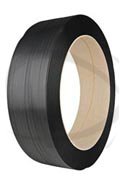 |
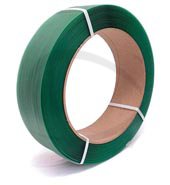 |
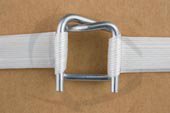 |
PP strapping has lowest values compared to the other types of plastic strapping regarding breaking strength, but highest in terms of elongation (appr. 20%).
For PET strapping, breaking strength is almost twice as high as for PP strapping with the same dimension (= same strap width and thickness), but elongation is almost only half as high.
Polyester textile strapping has highest breaking strength and lowest elongation and is thus closest to steel strapping (regarding those parameters). Depending on the treatment of yarns, there are three kinds of strap: hot melt (polyester yarns are glued), woven and composite (= polyester yarns are PP coated) polyester strapping.
| Hot melt |
Woven
|
Composite
|
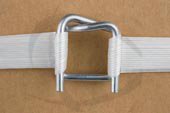 |
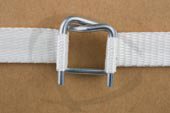 |
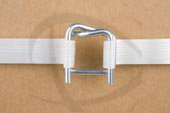 |
 |
A specific type of woven polyester strapping are so-called "one-way lashings". They are characterized by extremely high breaking strengths that are also printed on the strap (according to transportation regulation) and are mainly used by export packaging companies. |
 Eine Marke von LINDER GmbH
Eine Marke von LINDER GmbH



